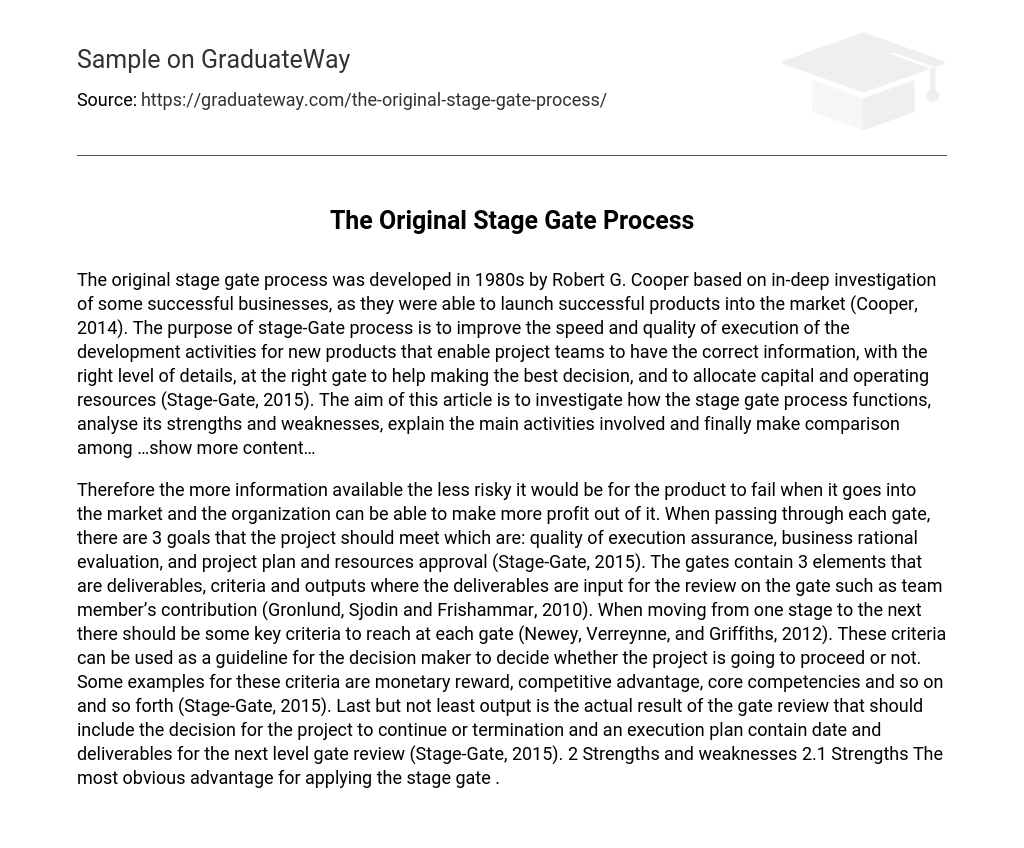The original stage gate process, created by Robert G. Cooper in the 1980s, was based on thorough research of successful businesses that were able to successfully launch products into the market (Cooper, 2014). The purpose of the stage-gate process is to enhance the speed and quality of new product development activities. It provides project teams with the necessary information at each gate to make informed decisions and allocate resources effectively (Stage-Gate, 2015). This article aims to examine the functioning of the stage gate process, analyze its strengths and weaknesses, explain its main activities, and compare it with other approaches.
Having more information available reduces the risk of product failure and allows organizations to maximize profits when bringing products to market. At each gate in the Stage-Gate process, there are three goals that the project must meet: ensuring quality execution, evaluating business rationality, and obtaining project plan and resource approval. These gates consist of three elements: deliverables, criteria, and outputs. The deliverables serve as input for gate reviews, including the contributions of team members. Moving from one stage to the next requires meeting specific criteria at each gate, such as monetary reward, competitive advantage, and core competencies. Ultimately, the output of the gate review determines whether the project will continue or be terminated, and includes an execution plan for the next gate review.
2 Strengths and weaknesses
2.1 Strengths
Applying the stage gate methodology offers several advantages.





